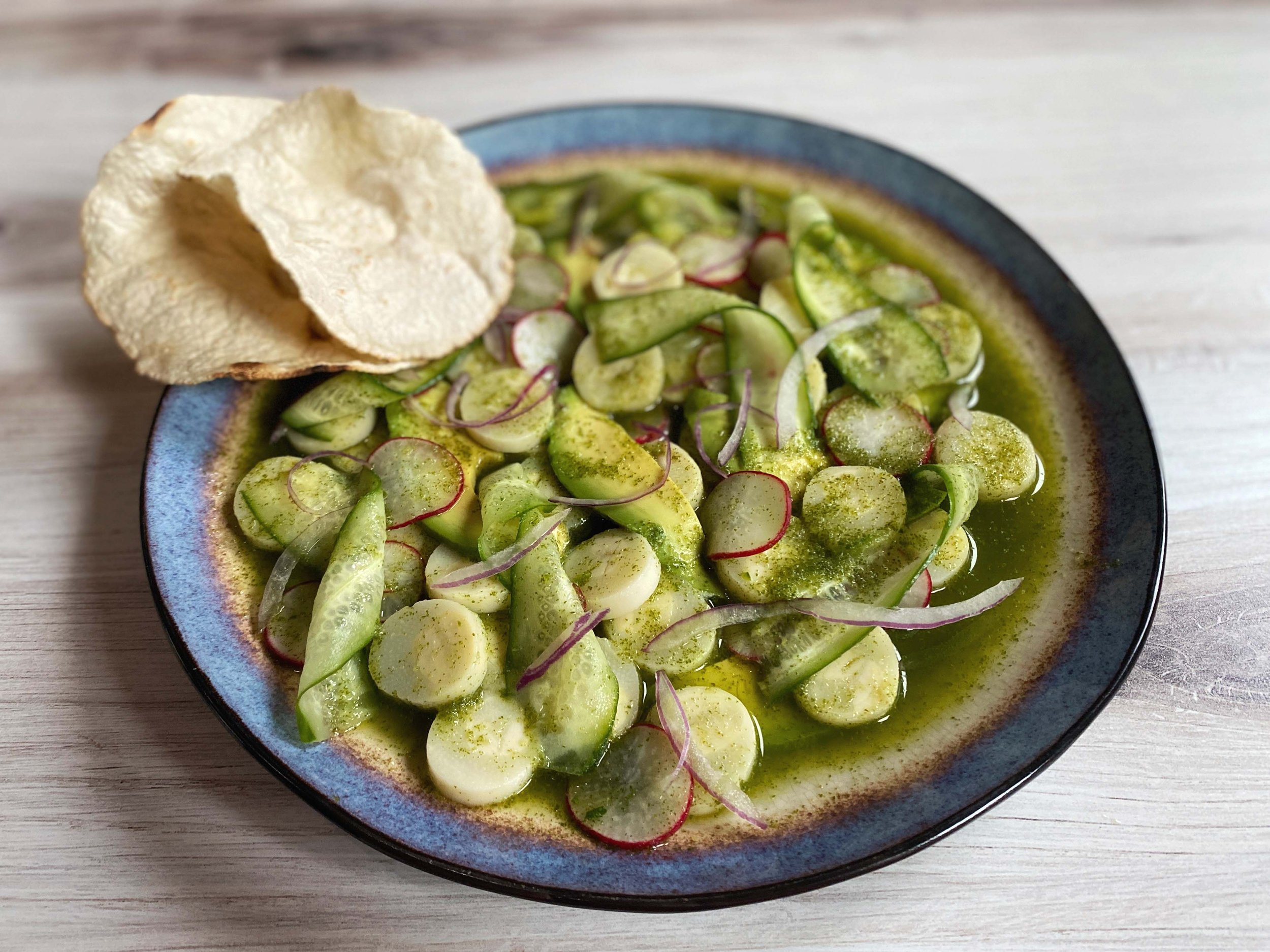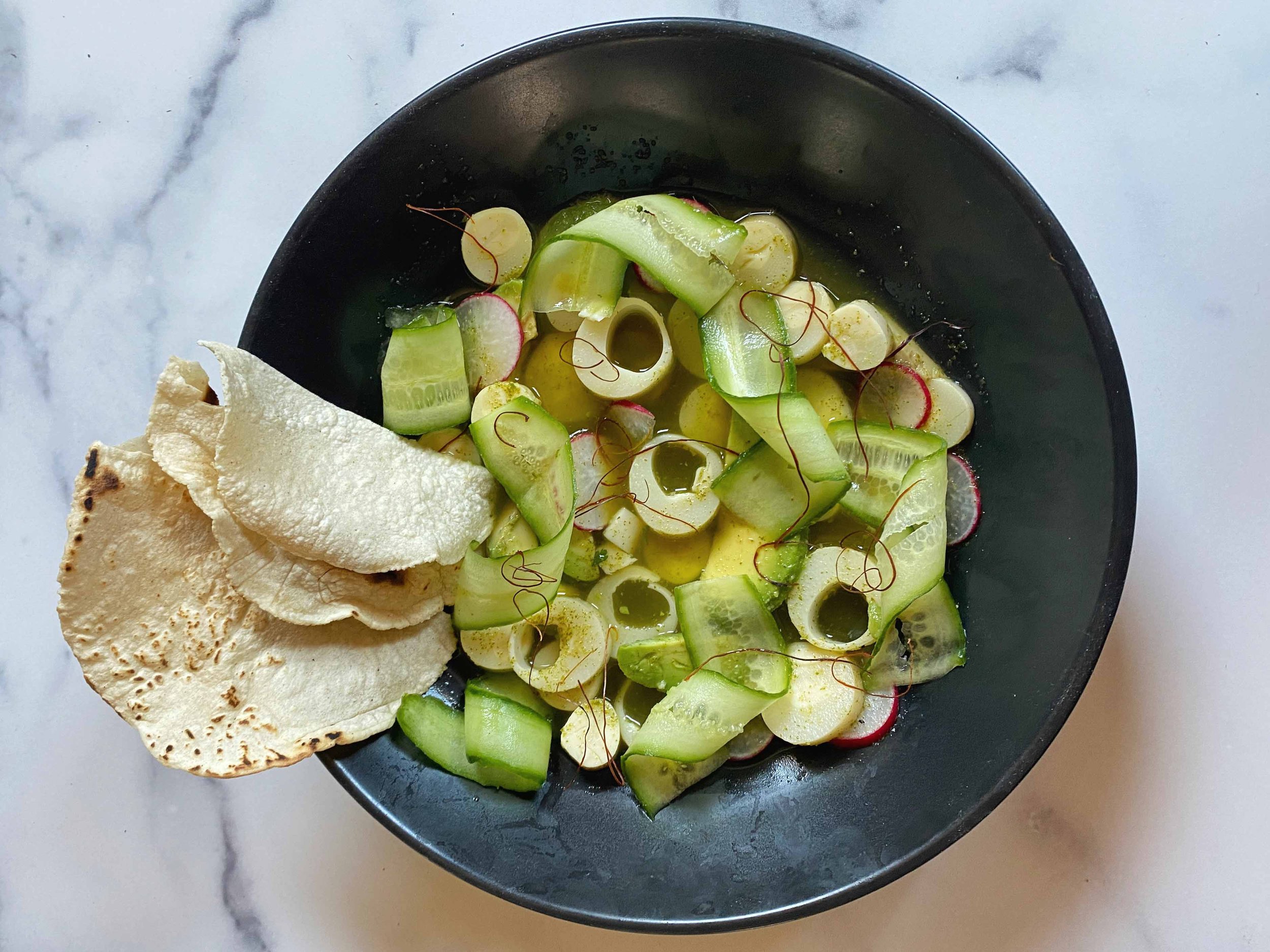By Leslie Brenner
[Editor’s note: This is Part 3 of a multi-part series. Here are Part 1 and Part 2.]
In the hands of an able chef, aguachile — northwest Mexico’s take on ceviche — can be so enticing. Yet try a recipe pulled off the internet, even from one of the most trustworthy cooking sites, and chances are it will be so acidic it scrapes the enamel off your teeth, and so chile-hot, you can’t eat more than one bite.
A recipe on one of those respected sites starts by blending three stemmed and seeded serranos with 3/4 cup straight lime juice and salt; two more serranos (plus some ground pequins) are added later.
What’s wrong with that?
The chiles, for starters. Five? Why not 10? The resulting aguachile may well be inedible either way.
That’s because all serranos are not created anything like equal. They can range in length from about one to four inches, and in Scoville heat from 10,000 to 25,000 units. One serrano can be powerfully spicy. Or relatively mild. So calling for a specific number of them without providing opportunities to taste and adjust is absolute folly.
All serranos are not created equal!
Much smarter is to start with a small amount of serrano, then gradually add more, if needed. That way you won’t wind up wishing you could subtract. Our recipe lets you do that.
RECIPE: Hearts of Palm Aguachile
Then there’s the lime juice. As we explained in Part 1 of this series, lime juice’s acid needs to be tamed to make a good ceviche, one that’s not harsh and twangy. That is, it needs to be diluted with a measure of something less acidic — orange juice, water, coconut water or something else.
READ: Summer of Ceviche Part 1
But wait — what exactly is an aguachile, anyway?
Let’s back up and talk about what makes an aguachile an aguachile, and how they’ve been evolving.
In Sinaloa, their birthplace, traditional aguachiles are shrimp ceviches spiked with wild chiltepín chiles; their sauce is a suspension of chiles in water — hence the name, which means “chile water.” Michael Snyder wrote an excellent piece about them for Eater a couple years ago.
The dish has captured the imaginations of chefs and other cooks far beyond Sinaloa. While shrimp versions are popular wherever aguachiles are found, as the dish has evolved, all kinds of seafood are getting the aguachile treatment. In Mexico City, chef Gabriela Cámara has two octopus aguachiles on her menu at Contramar — one green, the other red. Stateside, the Los Angeles restaurant Holbox has one starring Baja bay scallops. In New York City, Enrique Olvera’s Cosme offers one with hiramasa (amberjack), along with rhubarb and shiso.
In Dallas, where I live, Molino Olōyō chef and co-owner Olivia Lopez (who is also Cooks Without Borders’ Mexican Cuisine expert) has featured fluke in a spectacular aguachile with watermelon, green habanero and coriander at a couple of recent pop-up dinners, and kampachi with peaches in one at a recent take-out pop-up.
But aguachile is not just for seafood: There’s a beef aguachile on the menu at El Carlos Elegante (my favorite Mexican place to bring out-of-town visitors), and I recently enjoyed a Wagyu steak aguachile at a delightful Tex-Mex spot, Las Palmas.
And in the hands of careful chefs, deliciousness is the goal, not creating something so searingly spiced that only chile daredevils will enjoy it.
An aguachile for vegans
Aguachiles made with hearts of palm — palmitos in Spanish — have been popping up all over the internet. Made well and balanced properly, they can be wonderful: The texture of the hearts of palm almost mimics scallops or halibut. Adding slices of avocado adds richness. The best ones are not just great vegan aguachiles, but great aguachiles.
Unfortunately, as with seafood aguachiles, far too many of the palmito versions call for a lot of straight lime juice, and a stupidly precise number of chiles — four on that same respected cooking site that used five in the seafood aguachile. If you used four of the serranos currently residing in my fridge, the result would be inedible.
Our palmito aguachile recipe takes a soft approach — and its sauce is so delicious, you may want to drink it from the plate. We start with two parts coconut water, one part lime juice and a handful of cilantro, add a little salt and blitz it with one-quarter of one seeded serrano. Yep, just one quarter!
Taste it. If it’s spicy enough, you’re good to proceed. Want more heat? Add more serrano and blitz again. Repeat until you’re happy. The sauce has lovely body thanks to the cilantro; and it’s visually appealing, to boot. As you can see on the photo at the top of the story, the chile and herbs are suspended in the clear liquid. It looks the part of aguachile.
Next you arrange sliced hearts of palm on a platter with radishes, sliced avocado and ribbons of cucumber; slivers of red onion that have soaked in water to soften their flavor are nice in there as well. Pour the sauce over, and garnish with some chile threads, if you like.
But don’t feel like you need to go vegan with this sauce; it works well as an all-purpose aguachile bath. Substitute quickly blanched shrimp for the hearts of palm, and it’s differently delicious. Or use both palmitos and shrimp. Or skip the palmitos and use thinly sliced sea bass or other white fish, letting it “cook” about five minutes in the sauce before serving. The world is your oyster.
And yes — you could use oysters!
Whatever you use, tostadas make a nice accompaniment.



